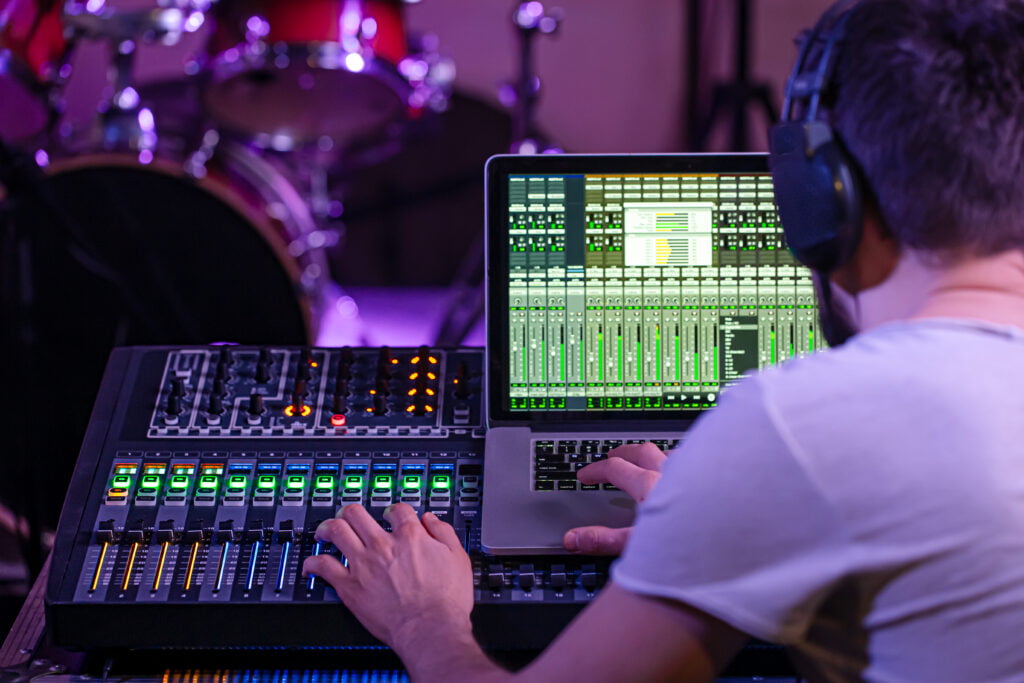Disclaimer: Some links in this article may be affiliate links. These links may earn us a small commission, but rest assured, our reviews are unbiased and not influenced by these affiliations. Your trust is our priority, and we are committed to providing honest assessments of the products we recommend.
Ahoy, budding music maestros! Ready to discover the Best DAW for Beginners? As you stand at the threshold of a new sonic realm, the electrifying pulse of the digital music universe beckons. Gone are the days when crafting tunes was a privilege of the elite with swanky studios. Now, armed with passion and a hint of creativity (yes, that’s pointing at you!), anyone can sculpt their unique masterpieces, be it foot-tapping beats or heart-wrenching melodies.
Imagine you’re gearing up for an epic quest. No wise adventurer would embark without their trusted equipment. Similarly, as you prepare to dive into the ocean of melodies and rhythms, you need the ideal companion: the Best DAW which works perfectly for beginners in music production.
A DAW is more than just software. It’s your blank canvas, your arsenal of tools, your spotlight, and occasionally, your toughest critique. Making the right choice can be the wind beneath the wings of your musical aspirations.
So, as you stand poised to venture into the enthralling realm of digital music, ensure you’re well-equipped. Tighten those shoelaces, sharpen your senses, and gear up for an unforgettable debut in the dazzling world of audio artistry!
Table of Contents
Understanding the Basics: What is a DAW?
“DAW” – no, it’s not the sound a cute puppy makes, though it’s equally exciting for music enthusiasts. Standing proudly for Digital Audio Workstation, the term might sound all technical and intimidating, but let’s demystify it together.
At its core, a DAW is a software application used for recording, editing, and producing audio files. If music-making was a kitchen (stay with me here!), then your DAW would be the equivalent of your oven, mixer, and even your presentation plate. It’s where raw ingredients (individual notes, beats, and vocals) transform into a scrumptious dish (your complete track).
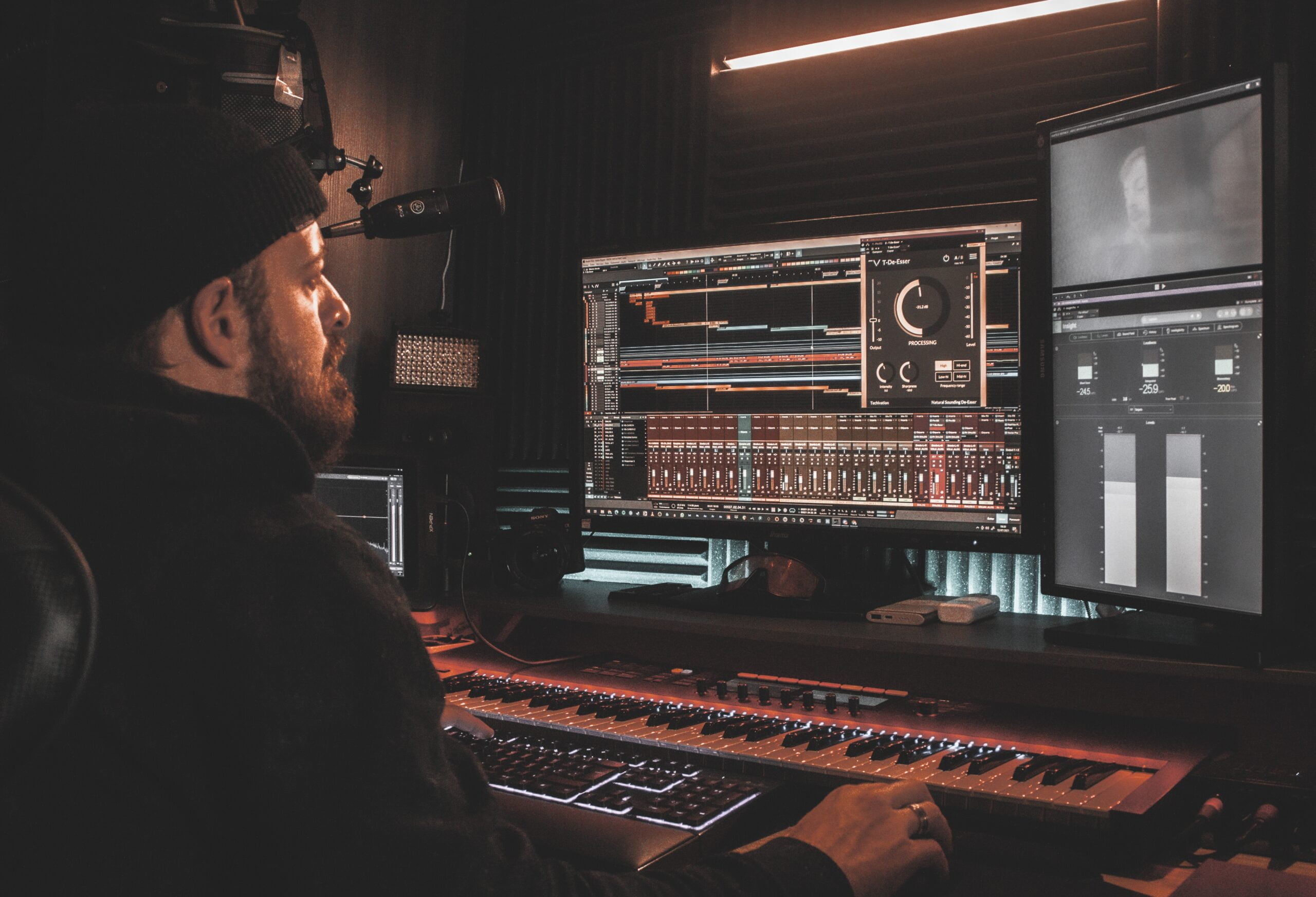
Now, let’s rewind a bit and think about the evolution of music. In the not-so-distant past, if someone fancied creating a song, they’d be surrounded by massive instruments, towering stacks of recording equipment, and reels of tapes (ask your parents!). Then came the compact studios with synthesisers and mixers. Fast forward to today, and music creation has taken a digital avatar. It’s more accessible, versatile, and, let’s be honest, less back-breaking!
So, what does a DAW offer that our traditional methods didn’t?
- Flexibility: Fancy adding an electric guitar to your ballad at 2 a.m.? Or perhaps a flute? With a DAW, you don’t need the actual instruments. Virtual instruments have got you covered.
- Space-Saving: No need for a room full of instruments. Heck, you don’t even need a studio. A laptop or a PC, some quality headphones, and you’re good to go.
- Experimentation: Want to speed up the beat, lower the pitch, or add an echo? A DAW is like a sandbox, urging you to play around and mould your masterpiece.
- Multitracking: This nifty feature lets you record different parts of your song separately and then layer them together. So, if you’re a one-man band, you can first record the drums, then the guitar, followed by the vocals, and finally blend them seamlessly.
- Editing: Made a mistake? With a DAW, there’s no need to re-record the entire track. Just snip out the error and carry on.
- Distribution: Once you’ve created your song, DAWs often have features that allow you to export your music in various formats, ready for sharing with the world.
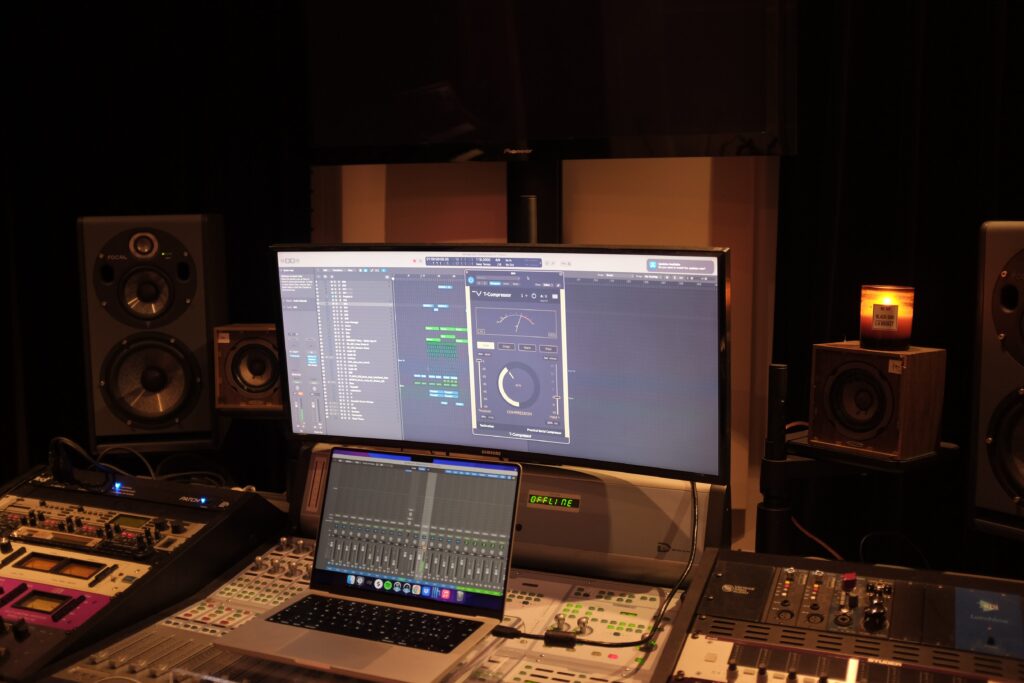
In essence, moving to the digital realm of music has not just been a technological shift but a cultural one. The barriers to entry in the world of music creation have lowered, allowing more people to express themselves musically. Whether you’re an aspiring artist, a shower singer, or someone who just loves tinkering with sounds, the DAW is your passport to a world of musical exploration. So, get ready to set sail! 🎵🚀🎧
What to Look for in a DAW as a Beginner
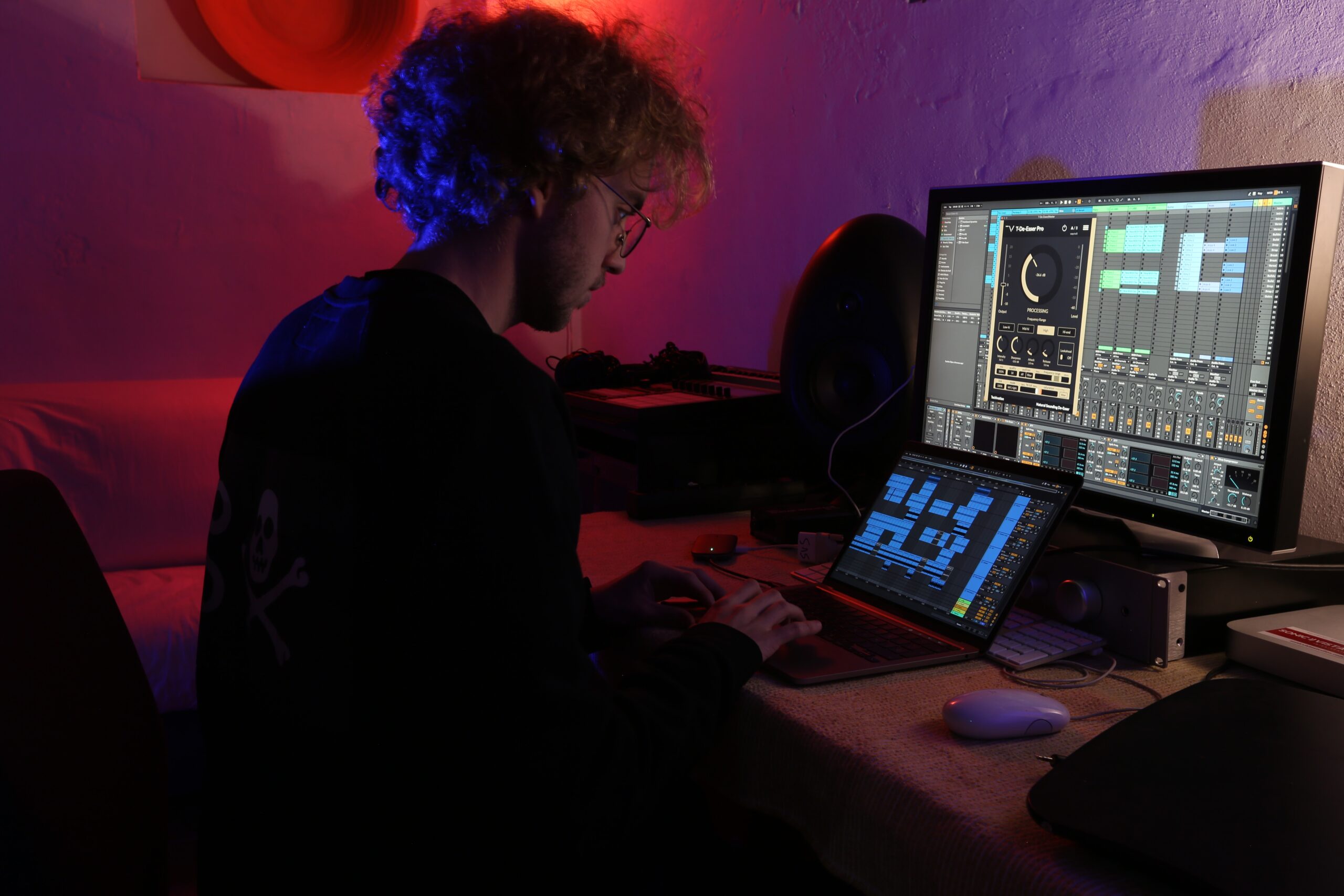
So, you’re raring to dip your toes into the vast ocean of music creation. But, wait a tick! Before you dive headfirst, let’s ensure you’re equipped with the right gear – in this case, a beginner-friendly DAW. But with a smorgasbord of options shimmering before your eyes, how do you pinpoint ‘the one’? Fear not! Here’s a handy guide to help you wade through the choices.
User-Friendly Interfaces
Think of a DAW interface as the dashboard of a car. Now, if you’ve never driven before, you’d probably feel more at ease in a car with clearly labelled controls rather than one with a cockpit resembling that of a spaceship! Similarly, for those making their debut in the digital music realm, a clear and intuitive interface is paramount. It should lay out tools and features in an organised manner, ensuring you’re not overwhelmed. Instead of wrestling with complicated menus, you’d want to channel all your energy into the creative process. In a nutshell, the simpler the dashboard, the smoother your journey.
A Strong Community and Support System
Even the most seasoned sailors sometimes need guidance from the stars. In the vast sea of music production, a robust community of fellow users can be your North Star. Platforms where users, both novice and experienced, come together to share tips, tricks, and solutions are invaluable. Moreover, a DAW with responsive customer support ensures that if you ever find yourself in choppy waters, help is just an SOS away.
Availability of Tutorials and Learning Resources
The best way to get to grips with a new DAW is by watching it in action. A platform rich in tutorials and learning resources can be a godsend. Whether it’s video walkthroughs, online courses, or written guides, these resources can speed up the learning curve tremendously. Instead of fumbling in the dark, you can stand on the shoulders of giants (or at least those who’ve been in your shoes before) and see farther and clearer.
Budget Considerations: Free versus Paid Options
Ah, the age-old dilemma – to spend or not to spend? Some DAWs are entirely free, while others might require you to part with a few quid. The key is to weigh the features against the price. As a beginner, you might not need all the bells and whistles of a professional DAW, so why pay for them? Start with a basic version or even a free trial to test the waters. Once you’re more confident and have a clearer idea of your needs, you can consider investing in a more advanced version. Remember, the most expensive option isn’t necessarily the best one for you!
Functionality and Features
Last but by no means least, delve deep into the features the DAW offers. As a novice, you might not need all the advanced functionalities straight away, but it’s worth having a DAW that can grow with you. Look out for features like virtual instruments, sound libraries, and effects. These can be game-changers when you’re just starting and don’t have access to a plethora of instruments.
Embarking on your music-making journey with the right DAW is akin to setting out on an expedition with the perfect backpack. It should be light enough not to weigh you down but sturdy enough to hold all your essentials. So, research a tad, trust your gut, and remember – the magic lies as much in the journey as in the destination.
How to Choose the Best DAW for Beginners
Alright, future music legends, grab your notebooks and ready your pens, for we’re diving into the sparkling waters of the best DAWs tailored for novices like you. Picture this: you’re about to step into a lavish musical boutique, with the finest tools awaiting your discerning gaze. Let’s embark on this tour together, exploring the crème de la crème of beginner-friendly DAWs.
a. GarageBand
Let’s start with Apple’s pièce de résistance: GarageBand. Exclusively nestled within the realm of Apple devices, GarageBand is like that delightful, free appetiser you get at a fancy restaurant—unexpected yet thoroughly enjoyable. Its charm lies in its simplicity. The interface is clean, almost beckoning beginners to experiment. With an array of virtual instruments at your fingertips, you can conjure an entire orchestra’s worth of sound without making a single purchase. If you’re lucky enough to own a Mac or an iPhone, this tool can be your first port of call in the vast sea of music creation.
If you are looking for Garageband tutorials, here’s a great starting point.
b. FL Studio
Stepping into the limelight next is the versatile FL Studio. Renowned for its user-centric design, FL Studio is like a Swiss Army knife in the world of DAWs—compact, yet bursting with features. Whether you want to dabble in electronic beats or try your hand at a classical sonnet, this software has got you covered. What’s particularly enticing for newcomers is the FL Studio Fruity Edition—a generous offering that doesn’t burn a hole in your pocket. It’s a fantastic starting point to familiarise yourself with the world of digital music without feeling overwhelmed.
Here’s a beginner’s guide on how to use FL Studio.
c. Ableton Live Intro
Ah, Ableton Live Intro, the darling of live performers! Picture this: you’re in front of a crowd, the lights dim, and it’s showtime. With Ableton by your side, you can be confident of delivering a seamless performance, be it tweaking your tracks on the fly or launching a series of loops in quick succession. But its prowess isn’t confined to the stage. Even in the quiet sanctum of your room, Ableton proves to be an ally. Its user-friendly layout ensures that beginners don’t feel like they’ve stepped into an advanced physics class by mistake. Instead, the learning curve feels natural, almost intuitive.
d. PreSonus Studio One Prime
PreSonus Studio One Prime is the unsung hero of the DAW world, especially for newcomers. Think of it as that quiet kid in class who, when given a chance, dazzles everyone with unexpected brilliance. It’s a free version, yet doesn’t skimp on professional-grade tools. The drag-and-drop workflow ensures that even the most tech-averse individual can feel like a pro in no time. It simplifies the process, making music creation feel like a breezy afternoon hobby rather than a daunting task.
e. Logic Pro X
Last, but by no means least, we have Logic Pro X. Consider it GarageBand’s elder, more sophisticated sibling. If GarageBand was the playful courtyard, Logic Pro X is the majestic palace. While it does come with a steeper learning curve, the suite of features it offers makes the climb worth it. From its exhaustive sound library to advanced mixing capabilities, it’s a tool that can serve you well beyond your beginner days, growing with you as you refine your craft.
To wrap up our musical boutique tour, remember that the best DAW for you is not just about features or popularity. It’s about finding a platform where your creativity feels at home, where your ideas flow seamlessly, and where every session brings you joy. So, try a few, trust your instincts, and let your musical journey begin! 🎶🎹🎧
Transitioning from Beginner to Advanced: When to Upgrade?
Much like the thrilling arc of a page-turner novel, your journey through the world of music production promises twists, turns, and character development. There comes a moment in every budding musician’s life when the training wheels must come off, signalling the transition from rookie tunes to symphonic masterpieces. But how do you discern when it’s the right time to upgrade your DAW and step into the big league? Let’s delve into this crescendo of musical maturation together.
Recognising the Signs
Imagine outgrowing a favourite pair of trainers; they’ve served you well, but now they’re a tad snug, and perhaps not quite apt for that marathon you’re eyeing. Similarly, as you evolve musically, you might start to feel the constraints of your beginner DAW. Perhaps you’re itching for more advanced editing tools, or you’re finding the sound library a bit limited. If you’re consistently hitting walls in your creative process or spending more time looking for workarounds than actually producing music, it’s a flashing neon sign urging you to consider an upgrade.
The Lure of Expanded Features and Plugins
The sheer variety of equipment available to you while learning more about music production is one of its most thrilling parts. Advanced DAWs are akin to Aladdin’s cave, teeming with treasures in the form of plugins, synthesisers, and sound effects. Whether you’re keen on experimenting with exotic instruments from around the globe or conjuring ethereal soundscapes for a fantasy game, upgraded software can be your magic carpet, offering functionalities that can elevate your tracks to professional standards.
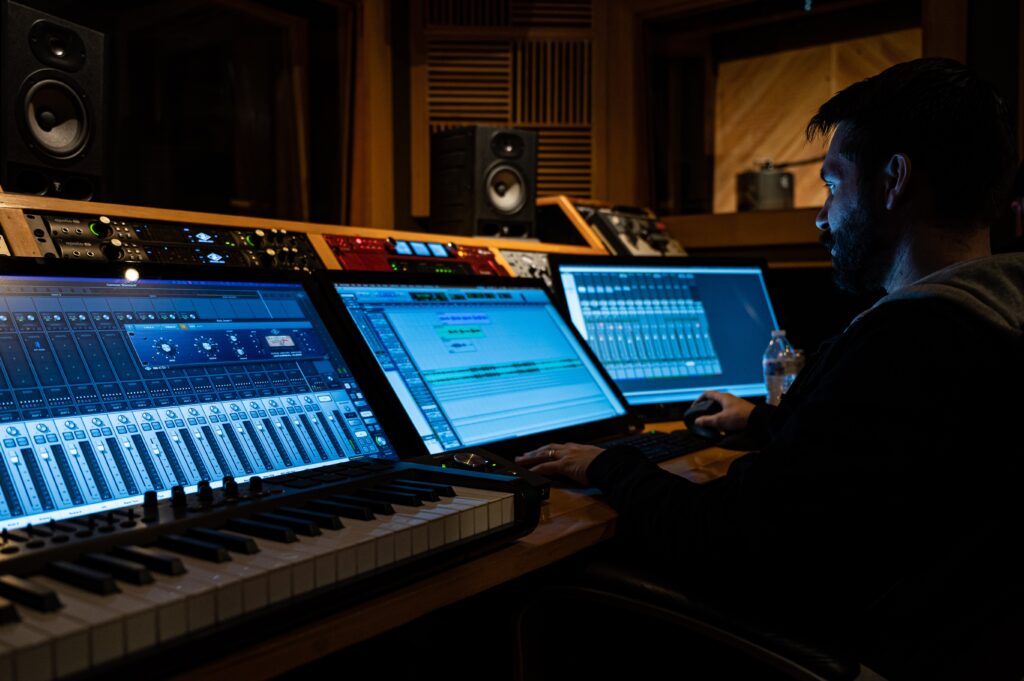
The Third-Party Plugin Paradise
While your beginner DAW might have a decent set of in-built instruments and effects, there’s a whole universe of third-party plugins out there. From vintage compressors that recreate the golden age of rock ‘n’ roll to futuristic synthesisers that would be at home in a sci-fi film, these plugins can exponentially enhance your sound palette. Advanced DAWs often offer better compatibility and integration with these external additions, allowing you to customise your workstation to your heart’s content.
Mastering One DAW: Depth over Breadth
The temptation to hop between multiple DAWs, sampling each one’s unique offerings, can be strong. However, in the area of music creation, there is a strong argument for loyalty. By committing to one DAW and truly mastering it, you delve deeper, unlocking secrets and shortcuts that casual dabbling might never reveal. It becomes an extension of your musical self, with every tool and feature at your fingertips, ready to serve your creative whims.
Future-Proofing Your Passion
Lastly, think of upgrading as an investment in your musical future. As you transition from a hobbyist to potentially considering a career in music, an advanced DAW can be your trusty sidekick, offering industry-standard production capabilities. It not only provides you with cutting-edge equipment but also communicates to others (and to yourself) that you take your job seriously.
The decision to upgrade your DAW is a significant milestone in your musical journey. It signifies growth, ambition, and a commitment to honing your art. While the world of advanced music production might seem daunting at first, remember that every maestro, every chart-topping artist, once stood where you stand now. So, embrace the journey, cherish the learning curves, and may your tunes always find their rhythm. 🎵🎚️🎧
Tips and Tricks for Getting Started
Starting out in the world of digital music production can feel a bit like being handed the keys to a grand library. The vast aisles, with books reaching dizzying heights, beckon with the promise of knowledge, but where do you even begin? Fear not, intrepid musical explorer! Just as every seasoned librarian has a list of must-reads for newcomers, here’s a collection of nifty tips and tricks to help you navigate the early chapters of your sonic storybook.
Embrace the World of Online Tutorials
We are lucky to have access to a genuine gold mine of internet materials in this digital age. Whether you’re a visual learner who thrives on video walkthroughs or someone who prefers meticulously detailed written guides, there’s something for everyone. Platforms like YouTube host thousands of DAW-specific tutorials, offering step-by-step guidance on everything from basic setup to intricate sound editing techniques.
Experimentation is Key
Your DAW is not just a tool; it’s a playground! Allow yourself the freedom to fiddle around, press unfamiliar buttons, and slide those mysterious-looking knobs. Sure, you might stumble upon unexpected (and sometimes cacophonous) results, but these moments of unplanned exploration often lead to bursts of inspiration. Think of it as your sandbox, where there’s no ‘wrong’ way to play.
Join Online Communities
Becoming part of DAW-specific online communities can be a game-changer. Here, you may interact with other newcomers, show off your early works, ask questions, and perhaps get helpful criticism. Moreover, these forums often become hubs for sharing free resources, from instrument packs to effect plugins, offering tools that can elevate your tracks.
Set Regular Challenges
One of the most effective ways to climb the steep learning curve is by setting yourself regular challenges. Maybe it’s producing a new beat every week, recreating a snippet of your favourite song, or even collaborating on a mini-project with a fellow newbie. These activities force you to step outside of your comfort zone and encourage you to discover new DAW features.
Backup Regularly
Now, this might sound more administrative than artistic, but trust us on this one: regular backups can save you a world of heartache. Imagine pouring hours into a track, getting every detail just right, only to lose it all to a software glitch or a misplaced click. Use cloud storage or external hard drives, and make it a habit to save multiple versions of your projects.
Seek Inspiration Everywhere
Finally, remember that your DAW is merely a vessel. The real magic lies in the world around you. From the rhythmic pitter-patter of rain to the lilting melodies of a bustling market, inspiration lurks in every corner. Carry a small recorder or use your smartphone to capture these ambient sounds. Who knows? That chirping bird might just be the missing piece in your next big track.
While these initial steps in your musical journey might seem daunting, every note you produce, every beat you perfect, and every melody you craft brings you closer to finding your unique sound signature. And as you string together these notes of wisdom, we’d be amiss not to point you to the frequently asked questions section. After all, if these tips are the appetisers, the FAQs are the hearty main course, answering those burning queries every budding musician harbours. Onwards, to the FAQs, and may your musical appetite be satiated! 🎵📖🎧
Best DAW for Beginners: Frequently Asked Questions
What exactly is a DAW?
A Digital Audio Workstation (DAW) is a software platform used to record, edit, and produce audio tracks. Think of it as your virtual studio where you can craft, tweak, and perfect your musical creations.
Are there any free DAWs for beginners?
Absolutely! There are several DAWs like GarageBand (for Apple users) and PreSonus Studio One Prime that offer free versions. Exploring their free versions could be an awesome way to gain a feel for music production without making an initial financial commitment.
Do I need any special equipment to start?
While a DAW is a foundational tool, having a good pair of headphones and a basic MIDI keyboard can enhance your music-making experience. As you advance, you might consider investing in monitors, audio interfaces, and mics.
Is it necessary to know how to play an instrument?
While knowing an instrument can be advantageous, it’s not a strict prerequisite in the digital age. Many DAWs come equipped with virtual instruments that you can ‘play’ using your computer or MIDI controller.
How do I share my tracks with the world?
Once you’ve crafted a piece you’re proud of, most DAWs allow you to export your track in various formats. You can then upload them to platforms like SoundCloud, Bandcamp, or even YouTube to share with the world.
Can I collaborate with others using a DAW?
Indeed, you can! Many DAWs have collaboration features built-in or allow for session files to be shared. Tools like Splice also enable artists to collaborate in real-time, irrespective of geographical boundaries.
Is it essential to have a background in music theory?
While a grasp of music theory can enhance your understanding, many successful producers started with just a keen ear and passion. As you dive deeper, you might naturally find yourself drawn to learning more about theory.
How do I keep up with updates and new features of my DAW?
Staying active in online DAW-specific communities and forums can be beneficial. Developers often share updates there, and fellow users frequently post about new features or tricks they’ve discovered.
Can I transfer my projects from one DAW to another?
Transferring projects between DAWs can be a tad tricky due to compatibility issues. However, you can often export individual tracks or stems from one DAW and then import them into another to continue working.
I feel overwhelmed with all the features. Is this normal?
Absolutely! Just like picking up an instrument, there’s a learning curve to using a DAW. Start with basic tutorials, take it one step at a time, and remember, every professional was once a beginner.
Conclusion
So, dear reader, we’ve arrived at the end of our musical voyage, which has brought us through the intricate tapestry of digital soundscapes. As the notes start to fade, and the reverb of our exploration lingers, let’s take a moment to reflect on the symphony of knowledge we’ve crafted together.
We started by establishing the scene in the thrilling world of digital music creation, a domain where creativity knows no limitations and the only limits are those imposed by our imaginations. The focal point of our discussion was, of course, the heart of this sonic universe: the Digital Audio Workstation, or DAW. As we’ve discovered, the best DAW for beginners isn’t just about glitzy features or slick interfaces—it’s about finding that perfect fit, a platform that resonates with your unique musical voice.
Taking those initial baby steps, we delved into the fundamental question: what exactly is a DAW? We unearthed its role as the cornerstone of modern music production and marvelled at the paradigm shift from traditional instruments to this digital revolution. Akin to learning the alphabet before diving into literature, grasping these basics sets the tone for everything that follows.
Our journey then took us on a quest, a hunt for the best DAW for beginners. And oh, what a vibrant bazaar of choices we encountered! From the Apple-exclusive allure of GarageBand to the professional prowess of Logic Pro X, we were spoilt for choice. Each DAW, with its unique character and features, beckoned, urging us to explore its depths.
But choosing the right DAW was just the beginning. We learnt about the significance of transitioning from beginner setups to more advanced workstations, highlighting the importance of growth and evolution in our musical journey. Every tool, every feature is a stepping stone that leads us closer to our masterpiece.
Finally, as with any journey, we prepared a toolkit of useful tips and tactics. These pearls of wisdom, collected from seasoned maestros and fresh-faced novices alike, promised to illuminate our path, ensuring our voyage was smooth and melodious.
Now, as we draw the curtains on our expedition, we come away with not just knowledge, but a newfound appreciation for the art of music production. The best DAW for beginners isn’t a one-size-fits-all solution. It’s a deeply personal choice, a reflection of who you are as an artist and where you aspire to go.
So, to all the budding Beethovens and future DJ superstars reading this: your symphony awaits. The notes are at your fingertips, the beats in your heart. Remember, every chartbuster, every haunting melody, started with a single note. It’s time to find your note, to begin your odyssey. And always keep in mind, in the vast universe of sound, the best DAW for beginners is the one that lets your music soar.
Happy composing, and may your tracks always hit the right chord! 🎵🎶🎹
Disclaimer: Some links in this article may be affiliate links. These links may earn us a small commission, but rest assured, our reviews are unbiased and not influenced by these affiliations. Your trust is our priority, and we are committed to providing honest assessments of the products we recommend.
